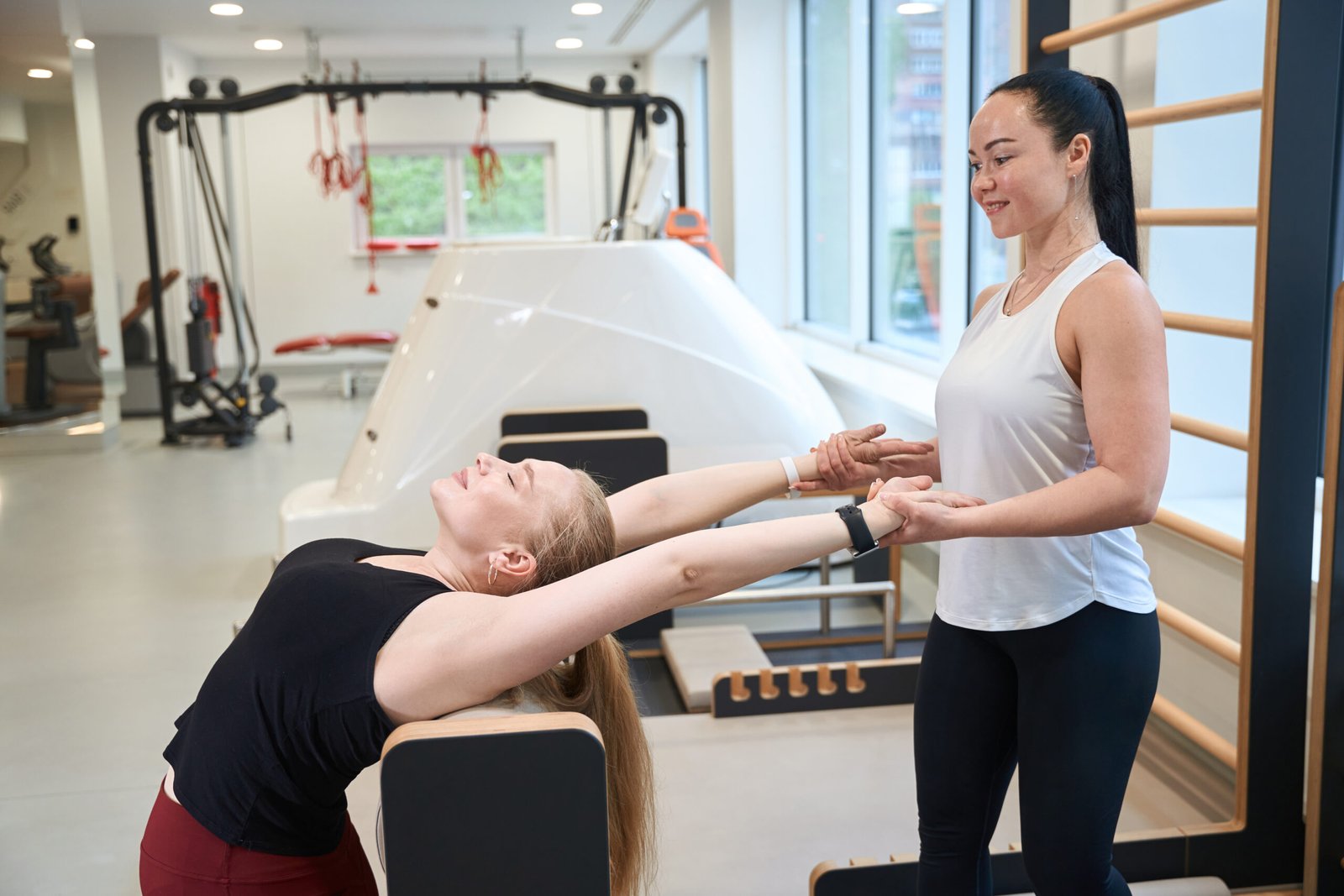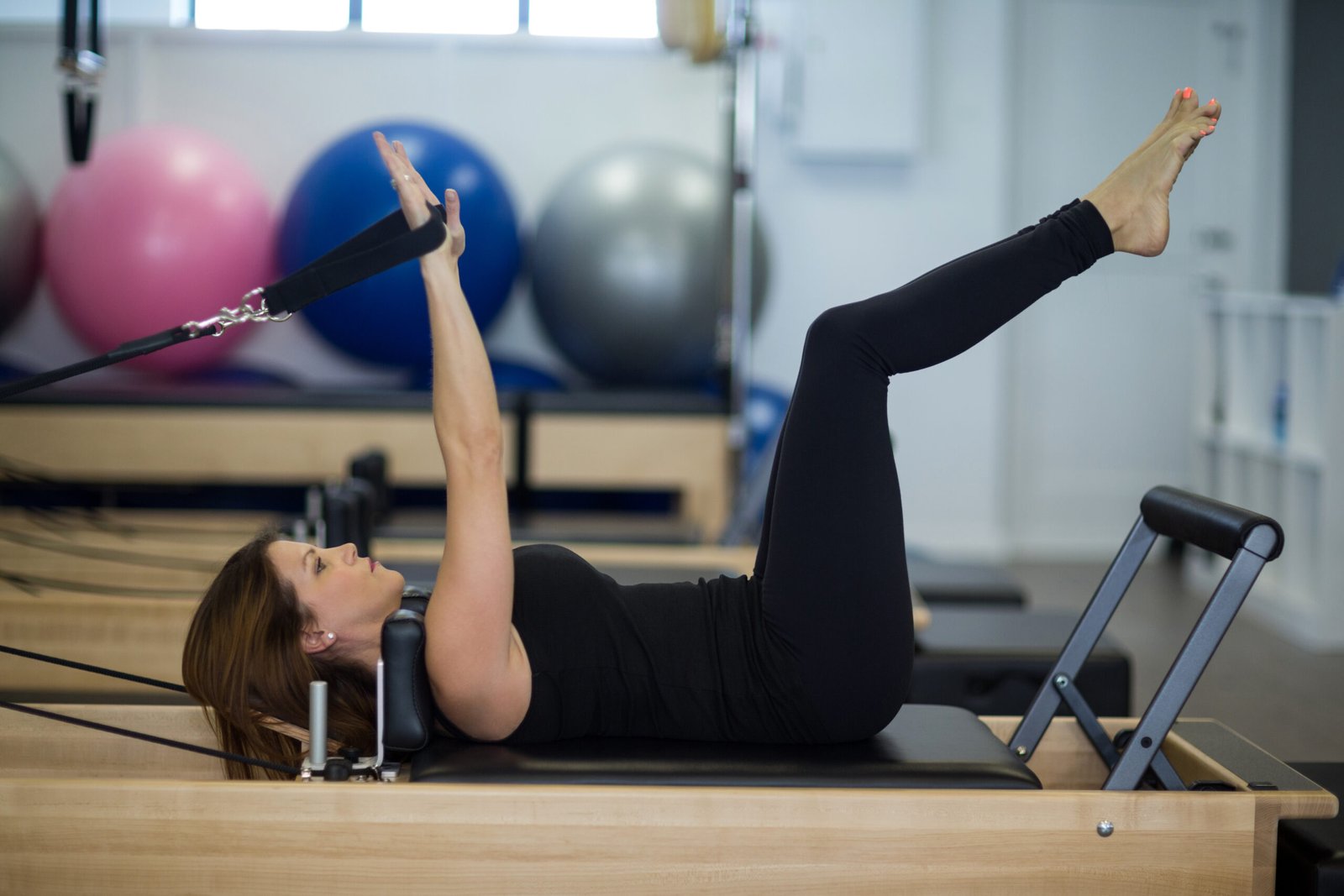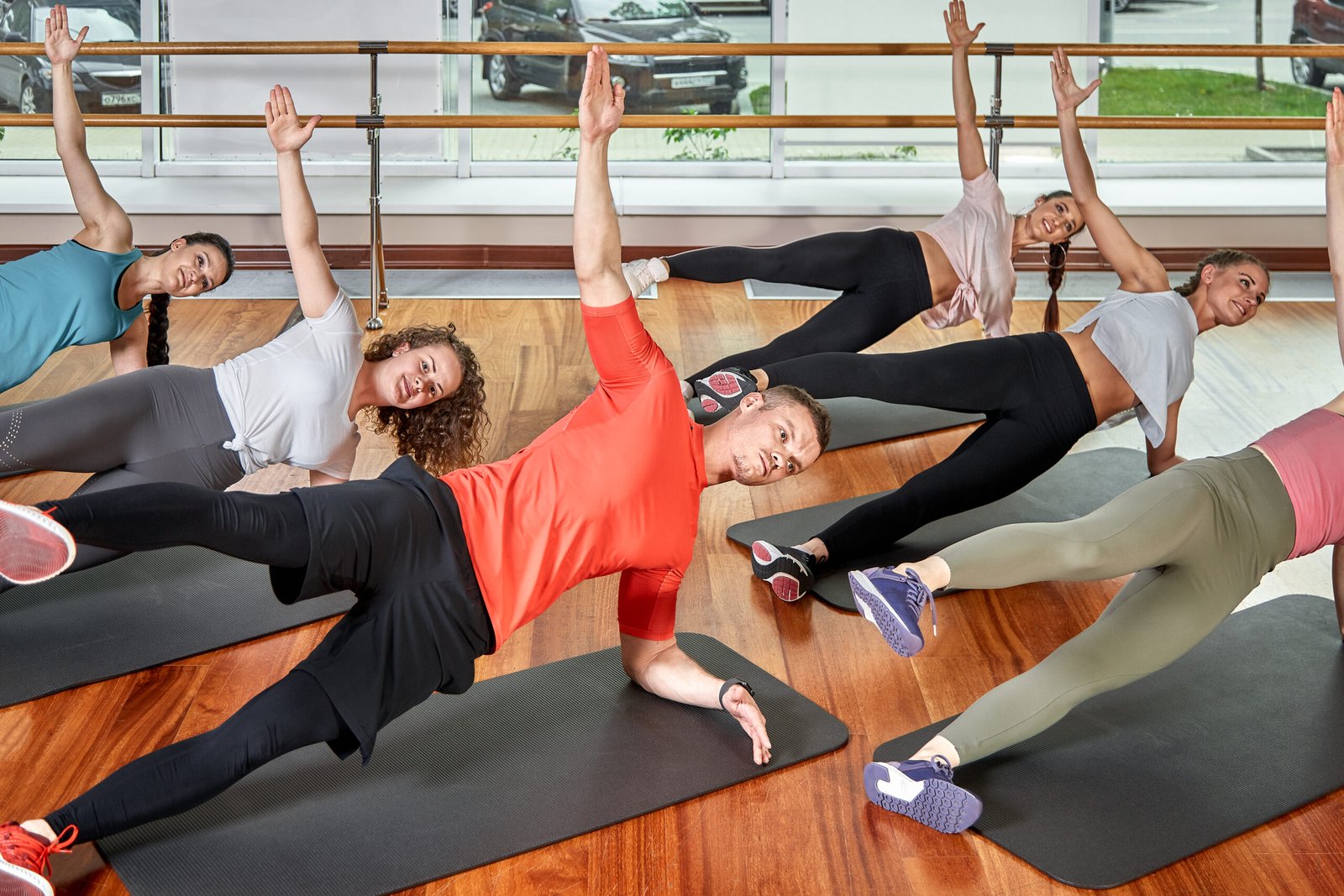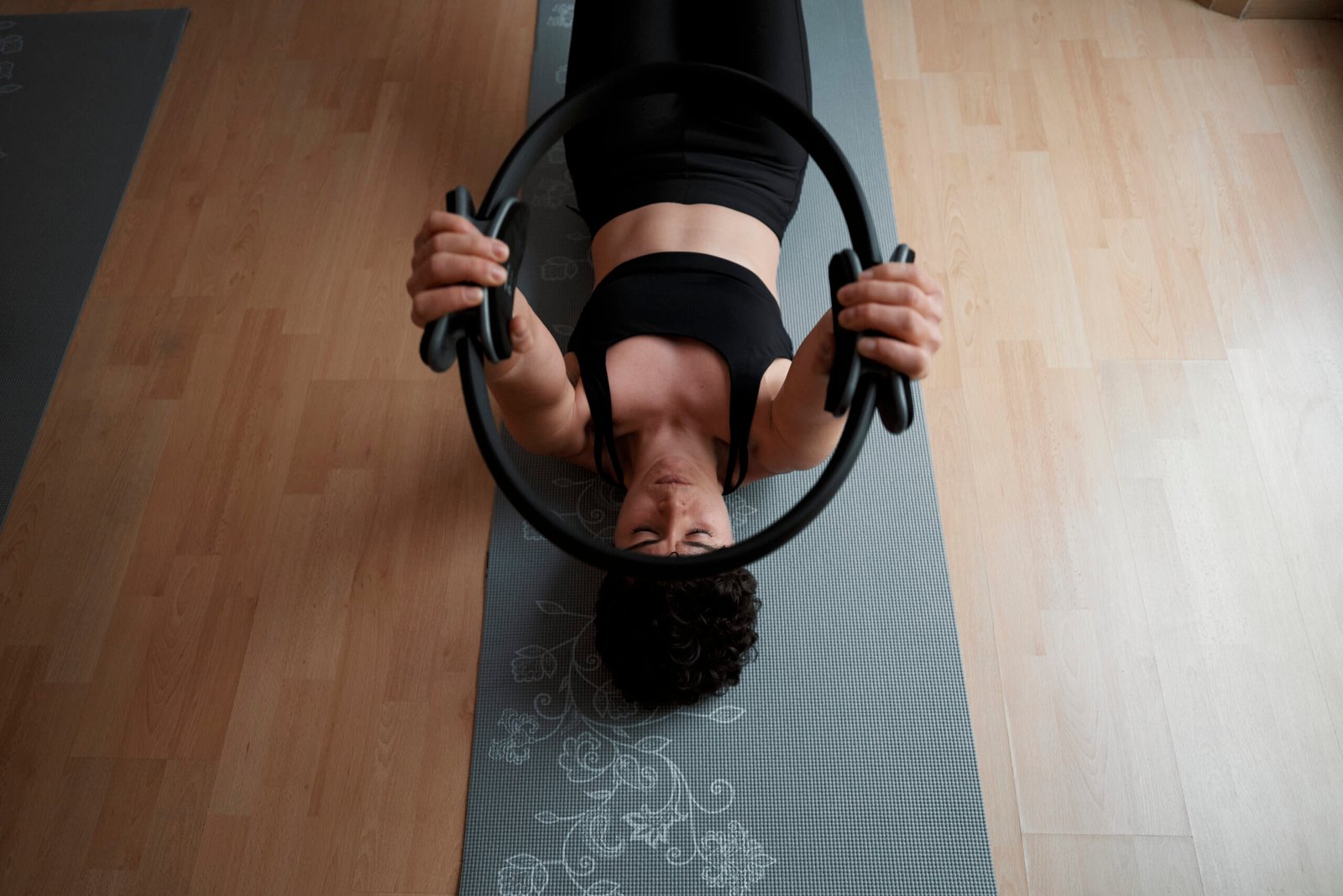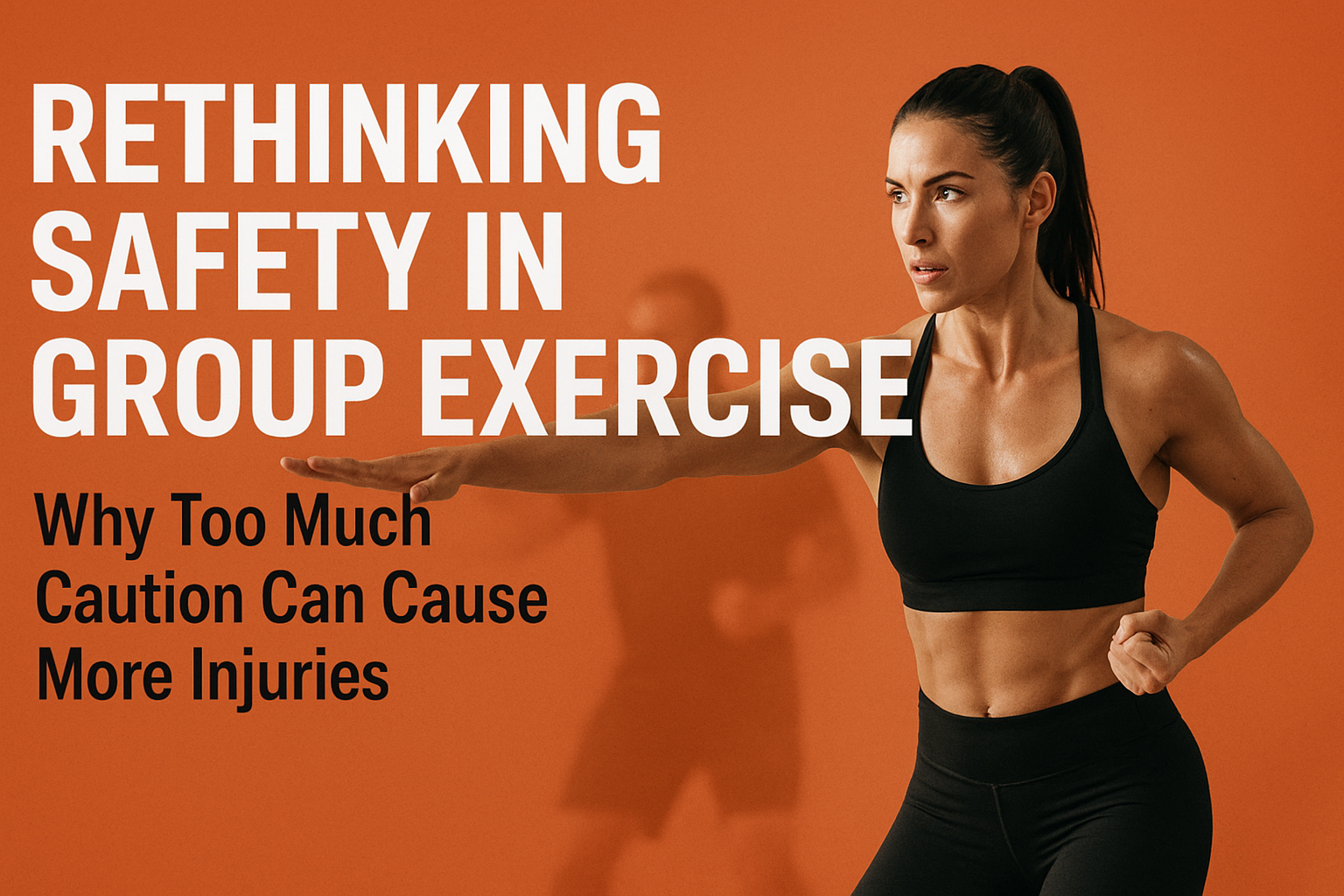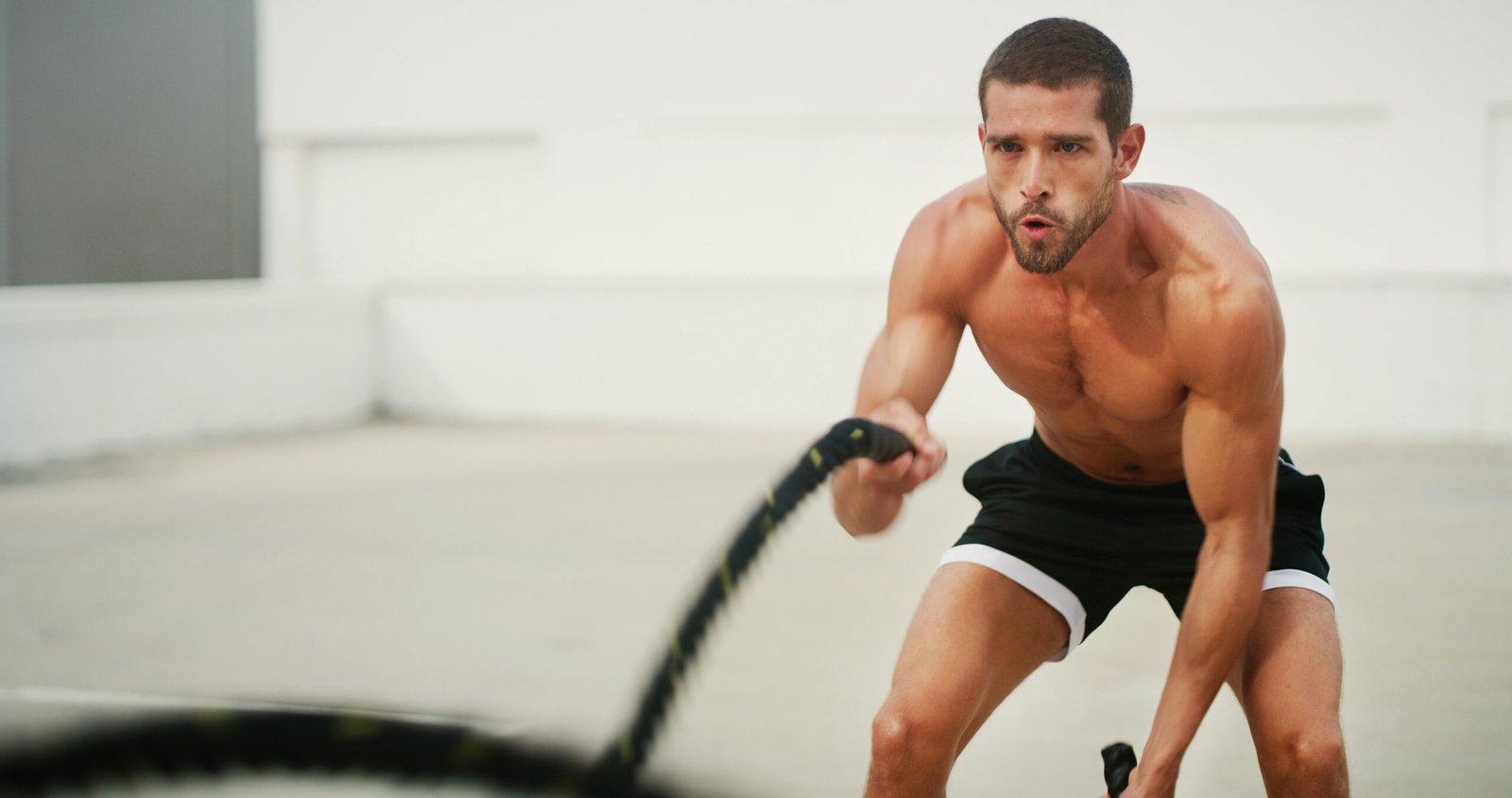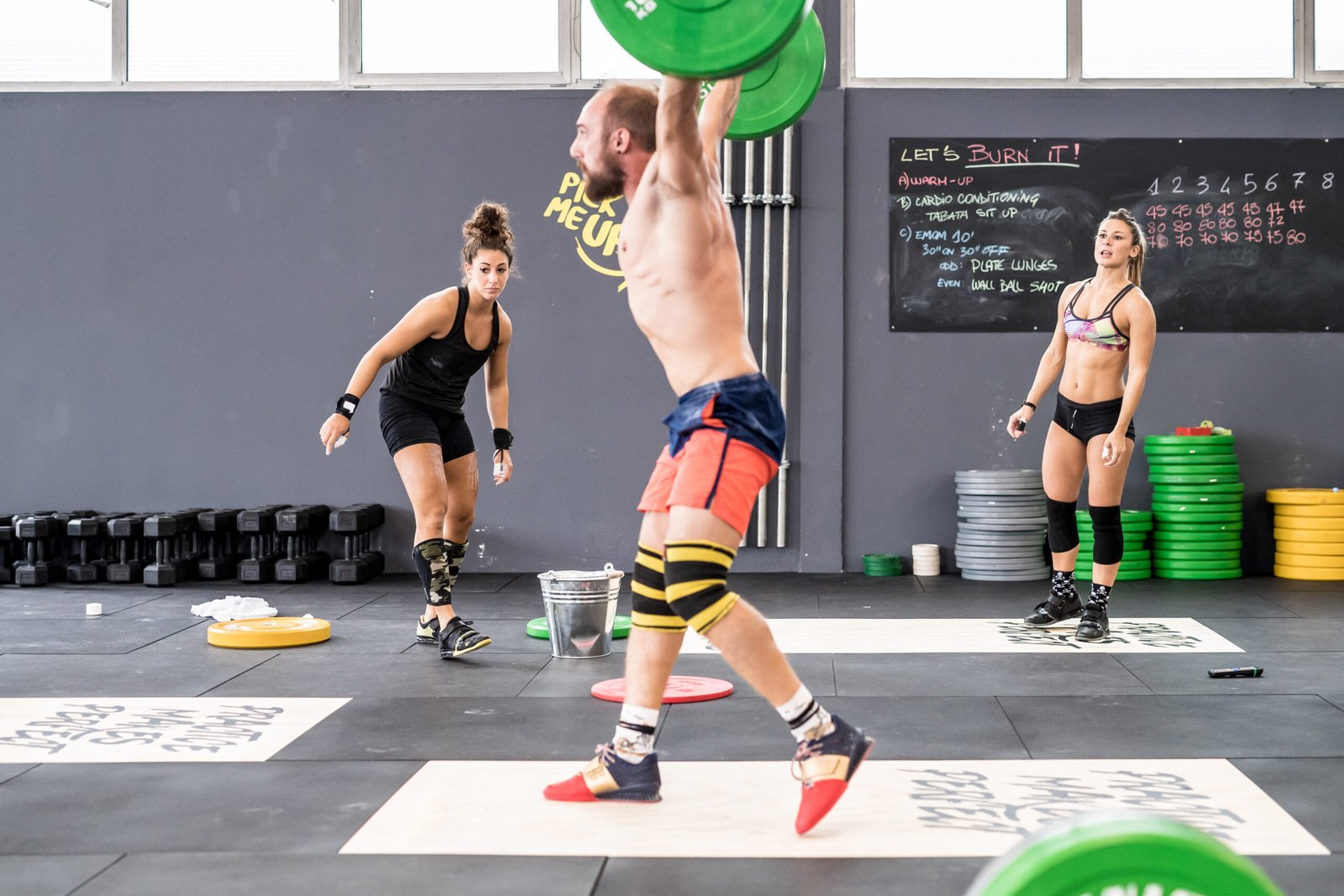Achieving mastery in Pilates requires not only diligent practice but also an understanding of the fundamental elements that enhance the experience. Among these, breathing stands out as a cornerstone, crucial for optimizing performance and benefiting both the body and mind. The role of breathing in Pilates is profound, impacting concentration, core activation, and ultimately, the results practitioners can achieve. This blog post will delve into the various aspects of breathing in Pilates, revealing how mastering this element can significantly transform one’s practice, leading to improved endurance, heightened focus, and a deeper connection between mind and body.
The Importance of Breathing in Pilates
Breathing is one of the fundamental aspects of Pilates, elevating the practice by enhancing concentration and control during exercises. It is not merely about inhaling and exhaling but involves specific techniques aimed at optimizing oxygen flow. This improvement in oxygen circulation naturally results in increased energy and endurance, allowing practitioners to sustain exercises longer with less fatigue. Moreover, synchronizing breath with movement is a key principle in Pilates, helping to activate core muscles and maintain correct posture. Mindful breathing not only helps in physical stabilization but also reduces tension and stress, promoting a more focused and effective workout environment. Mastery of breathing in Pilates creates an understatement of its power in elevating performance, paving the way for greater progress and results.
– Improves oxygen flow, enhancing energy and endurance.
– Activates core muscles, aiding in proper posture.
– Reduces tension and stress for a more focused workout.
– Enhances overall performance, contributing to progress and results.
DIAPHRAGM
The diaphragm plays a crucial role in breathing, serving as the primary muscle that facilitates inhalation and exhalation during Pilates exercises. Its proper engagement is central to core stability, as its movement helps stabilize the trunk and support the spine, which are foundational aspects of Pilates workouts. Efficient use of the diaphragm enhances oxygenation, fostering better endurance and overall performance during Pilates routines. Mastering diaphragmatic breathing has the added benefit of reducing tension and fatigue, enabling practitioners to maintain focus and execute movements with precision. Incorporating diaphragmatic breathing into Pilates practice therefore not only improves physical performance but also fosters a deeper mind-body connection.
– Enhances core stability by engaging the diaphragm.
– Improves oxygenation, aiding endurance in routines.
– Reduces tension and fatigue, increasing focus and precision.
– Fosters a mind-body connection, enhancing performance.
BREATHING TECHNIQUE
| 🌬️ Technique | Purpose | Effect on Pilates Performance |
|---|---|---|
| Diaphragmatic Breathing | Focuses on deep breathing, activating the diaphragm for better oxygen flow. | Enhances core stability, reduces fatigue. |
| Lateral Breathing | Involves expanding the ribcage laterally to engage core muscles. | Improves posture, strengthens abdominal muscles. |
| Conscious Deep Breathing | Calms the nervous system, focuses on steady, deep inhales and exhales. | Reduces stress, enhances mind-body connection. |
| Synchronizing Breath and Movement | Integrates breath with movement for smoother transitions and better control. | Increases efficiency, improves focus during exercises. |
| Breathing with Core Engagement | Uses breath to activate and support the core during movements. | Better spinal alignment, stronger core muscles. |
Breathing as a foundational element in Pilates plays a pivotal role in enhancing focus, alignment, and efficiency throughout exercises. Proper breathing techniques are instrumental in engaging core muscles, thus improving control and stability during movements. Furthermore, controlled breathing increases oxygen flow, thereby heightening endurance and reducing fatigue for better overall performance. Integrating mindful breathing into practice can yield additional benefits, such as boosting mental clarity, reducing stress, and deepening the mind-body connection. Ultimately, mastering breathing techniques in Pilates not only enhances physical performance but also supports long-term health benefits.
– Enhances focus, alignment, and exercise efficiency.
– Facilitates core muscle engagement for stability.
– Heightens endurance by improving oxygen flow.
– Boosts mental clarity and reduces stress.
THE THEORY BEHIND PILATES BREATHING TECHNIQUE
| 🧠 Aspect | Explanation | Benefits |
|---|---|---|
| Breathing Focus | Focuses on lateral or diaphragmatic breathing for optimal lung and diaphragm engagement. | Enhances core engagement, spinal alignment. |
| Ribcage Expansion | Encourages ribcage expansion without elevating the shoulders. | Increases oxygen flow, stabilizes core muscles. |
| Oxygen Flow | Promotes controlled, deep breaths to enhance muscle oxygenation. | Greater endurance, reduced fatigue. |
| Mental Clarity | Improves mental focus through mindful breath control. | Increased concentration, reduced stress. |
| Stress Reduction | Facilitates relaxation by controlling breath. | More relaxed state, improved performance. |
The Pilates breathing technique is often referred to as lateral or diaphragmatic breathing, which emphasizes deep, controlled breaths that expand the ribcage without raising the shoulders. This method enhances core engagement, stability, and alignment—components crucial for effective Pilates practice. With a strong emphasis on increasing oxygen flow to muscles, it aids in improving endurance while reducing fatigue during workouts. Correct breathing techniques also lead to heightened mental focus and reduced stress, optimizing performance and well-being. Thus, mastering Pilates breathing helps cultivate a deep mind-body connection, ultimately enhancing the efficiency and effectiveness of movements.
– Emphasizes ribcage expansion, improving core engagement.
– Increases oxygen flow, enhancing endurance.
– Reduces stress, improving mental focus.
– Facilitates a powerful mind-body connection.
RIBCAGE POSITION WHEN BREATHING
The ribcage plays a pivotal role in breathing mechanics, significantly impacting performance in Pilates. Maintaining optimal ribcage positioning is vital for efficient lung expansion, ensuring that oxygen uptake is maximized during exercises. A neutral ribcage position not only prevents strain on the spine but also improves core stability, which is essential in Pilates. Being aware of ribcage placement ensures optimal diaphragm function, supporting controlled and effective movement. Mastery of ribcage positioning during breathwork can lead to increased endurance and reduced fatigue, allowing practitioners to enhance their performance in Pilates practice.
– Ensures optimal lung expansion for better oxygen uptake.
– Prevents strain and improves core stability.
– Supports diaphragm function, aiding controlled movement.
– Increases endurance and reduces fatigue.
APPLYING BREATH TO MOVEMENT
Applying breath to movement is a quintessential aspect of Pilates, significantly enhancing focus and precision during exercises. Breathing deeply and intentionally can create a stronger mind-body connection, fostering better posture and balance throughout workouts. Proper breathing increases oxygen flow, boosting endurance and enabling more efficient energy use during Pilates sessions. Mindful breath control not only aids in releasing tension but also reduces stress, creating a more relaxed and effective practice environment. Mastering the art of synchronizing breath and movement can ultimately lead to improved physical performance and a more profound sense of well-being.
– Enhances mind-body connection for better precision.
– Boosts endurance through increased oxygen flow.
– Reduces stress, creating a relaxing environment.
– Leads to improved physical performance.
HOW IMPORTANT IS IT TO USE THE CORRECT BREATHING PATTERNS?
| 💪 Breathing Pattern | Effect on Pilates Performance | Benefits |
|---|---|---|
| Core Activation | Correct breathing patterns engage the deep core muscles. | Better posture, improved movement control. |
| Increased Oxygen Flow | Optimizes oxygen intake during exercises, improving stamina. | Greater endurance, reduced fatigue. |
| Stress Reduction | Breathwork activates the parasympathetic nervous system, lowering stress. | Promotes relaxation, enhances mental clarity. |
| Prevents Injury | Proper breathing ensures correct body alignment and reduces strain. | Injury prevention, promotes safety. |
| Improved Focus | Controlled breathing keeps focus on the present moment during workouts. | Sharpens mental focus, better precision. |
Utilizing correct breathing patterns in Pilates is crucial for enhancing oxygen flow, which leads to improved muscle efficiency and endurance. Proper breathing techniques are essential for activating core muscles, which ensure stability and better control during exercises. Focusing on breath can reduce tension and stress, promoting relaxation and mindfulness in practice. Synchronizing breath with movement aids in smoother transitions, optimizing overall performance. Mastering breathing patterns can also prevent injury, as it ensures proper alignment and reduces unnecessary strain on the body.
– Enhances oxygen flow for better muscle efficiency.
– Activates core muscles for improved control.
– Reduces stress and promotes mindfulness.
– Prevents injury by ensuring correct alignment.
6 Benefits of Pilates Breathing
| 🧘♀️ Benefit | Description | Impact on Performance |
|---|---|---|
| Enhances Oxygen Flow | Ensures optimal oxygen supply to muscles, reducing fatigue. | Increased endurance, prolonged workouts. |
| Increases Core Stability | Supports core engagement, leading to improved posture and stability. | Better control during exercises. |
| Reduces Stress | Calms the nervous system and promotes relaxation. | Mental clarity, improved focus during practice. |
| Improves Concentration | Conscious breathing sharpens focus, making movements more precise. | Enhanced performance, better execution. |
| Boosts Emotional Well-being | Breathing techniques foster emotional balance and mindfulness. | Heightened emotional resilience and calmness. |
| Promotes Overall Health | Integrates better respiratory patterns, improving long-term health. | Improved lung capacity, reduced stress. |
Breathing is a critical component of Pilates, offering a multitude of benefits that enhance the overall effectiveness of the practice. Here are six significant benefits:
1. Enhances Oxygen Flow: Pilates breathing ensures an optimal oxygen supply to muscles, boosting endurance and reducing fatigue.
2. Increases Core Stability: Focused breathing supports core engagement, leading to improved stability and posture during workouts.
3. Reduces Stress: Mindful breathing techniques help decrease stress levels, promoting mental clarity and relaxation.
4. Improves Concentration: Conscious breath control sharpens focus, allowing practitioners to execute exercises with precision.
5. Boosts Emotional Well-being: Regular practice of Pilates breathing cultivates mindfulness and emotional balance.
6. Promotes Overall Health: Integrates better respiratory patterns that can lead to long-term health benefits.
– Increases oxygen flow to improve endurance.
– Enhances core stability for better posture.
– Reduces stress for mental clarity.
– Cultivates focus and precision in exercise.
– Enhances emotional well-being through mindfulness.
The Importance of Breath and Movement
Breathing is a crucial component of Pilates, enhancing both physical performance and mental focus. By aiding in better oxygenation of muscles, proper breath control contributes to improved endurance and strength. Synchronizing breath with movement maximizes the efficiency and fluidity of Pilates exercises. Furthermore, mindful breathing promotes relaxation, reducing stress and enhancing overall well-being. Mastery of breathing techniques in Pilates not only elevates practice but also results in a transformative body-mind connection, ultimately embodying the holistic nature of Pilates.
– Enhances physical performance and focus.
– Improves muscle oxygenation for strength.
– Maximizes exercise efficiency through breath.
– Promotes relaxation and overall well-being.
1. Deep Breathing is a Natural Internal Cleansing Mechanism
| ❤️ Health Benefit | Explanation | Pilates Impact |
|---|---|---|
| Detoxification | Breathing enhances the body’s ability to remove toxins through improved circulation. | Better energy flow, improved performance. |
| Increased Energy | Deep breathing enhances oxygen intake, boosting energy levels. | Improved stamina during Pilates sessions. |
| Core Support | Diaphragmatic breathing strengthens core stability. | Enhanced posture and spinal alignment. |
| Stress Relief | Mindful breathing reduces cortisol levels, calming the mind. | Improved mental clarity and emotional balance. |
| Enhanced Lung Capacity | Regular breathwork increases lung capacity, improving aerobic performance. | Greater endurance in Pilates movements. |
Deep breathing is not just integral to Pilates; it acts as a natural internal cleansing mechanism that enhances overall health. It facilitates the removal of toxins and waste products from the body, promoting cellular rejuvenation. This improved oxygen exchange boosts energy levels and enhances performance during Pilates exercises. Involvement of the diaphragm in deep breathing also supports core stability and strength, essential in Pilates practice. By calming the nervous system, deep breathing reduces stress and increases focus, crucial for an effective Pilates session. Moreover, regular practice of deep breathing techniques can lead to improved lung capacity and endurance, enhancing the overall Pilates experience.
– Enhances health by removing body toxins.
– Boosts energy through better oxygen exchange.
– Supports core stability with diaphragm engagement.
– Reduces stress, increasing exercise focus.
2. Conscious Deep Breath Integrates the Mind and Body
Conscious deep breathing in Pilates serves as a bridge between the mind and body, enhancing focus and awareness during practice. This breathing technique aids in calming the nervous system, reducing stress, and fostering a sense of relaxation. By integrating deep breaths, practitioners maintain better control and precision in their movements, leading to improved overall performance. Additionally, conscious breathing boosts oxygen circulation, providing muscles with the energy needed for optimal function. A consistent breath work routine deepens the mind-body connection, enhancing well-being and mindfulness.
– Enhances mind-body focus and awareness.
– Reduces stress for mental relaxation.
– Improves movement control and precision.
– Boosts oxygen flow and energy circulation.
3. Lateral Breathing Facilitates Core Muscle Activation
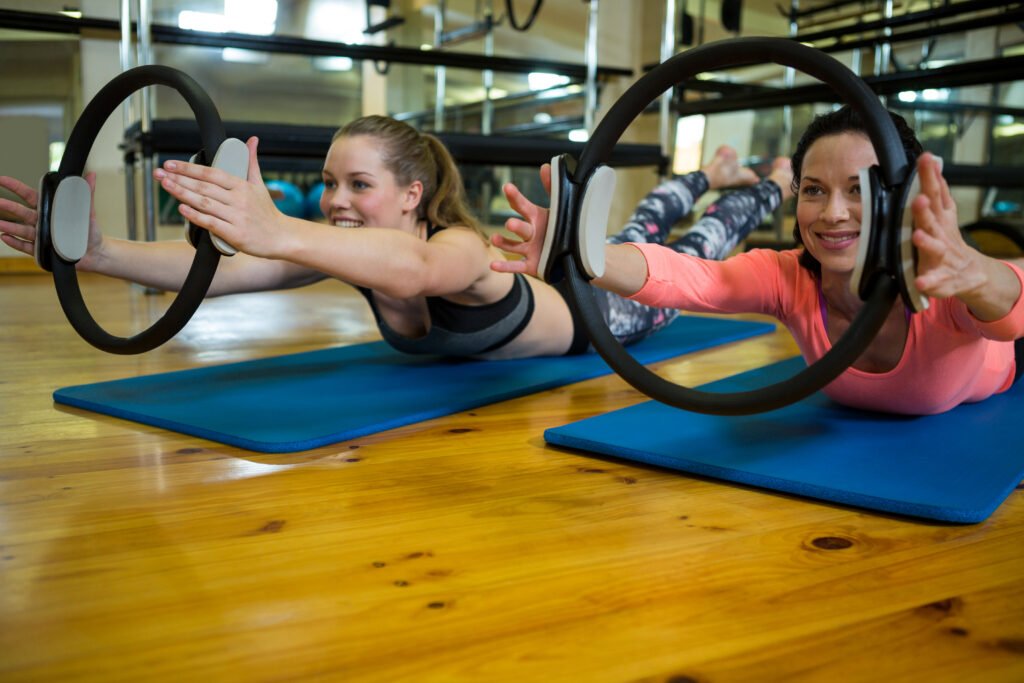
Lateral breathing in Pilates focuses on expanding the ribs sideways, enhancing breath control and oxygen flow. This technique is particularly effective in activating core muscles by engaging the diaphragm and stabilizing the torso. Such engagement supports better posture and spinal alignment, crucial aspects of effective Pilates practice. By practicing lateral breathing, individuals increase overall body awareness, contributing to more precise and effective movements. Mastery of this technique can considerably enhance performance, leading to greater strength and flexibility.
– Expands ribs for better diaphragm engagement.
– Effectively activates core muscles for posture.
– Supports spinal alignment and stability.
– Improves precision in Pilates movements.
4. Applying Breath to Movement Increases Safety of Exercises
Coordinating breath with movement in Pilates enhances exercise control and stability, thereby improving safety. Proper breathing techniques maintain focus, reducing the risk of injury by ensuring correct body alignment. Breath support also allows for better activation of core muscles, providing essential protection for the spine. By incorporating breathwork, transitions between exercises become smoother, minimizing unnecessary strain. Thus, mastering breath control not only boosts performance but also fosters a mindful and safe practice environment.
– Enhances exercise control and stability.
– Ensures body alignment, reducing injury risk.
– Provides spine protection through core engagement.
– Smooths transitions, minimizing strain.
5. Regular Breathwork Increases Lung Capacity and Ribcage Mobility
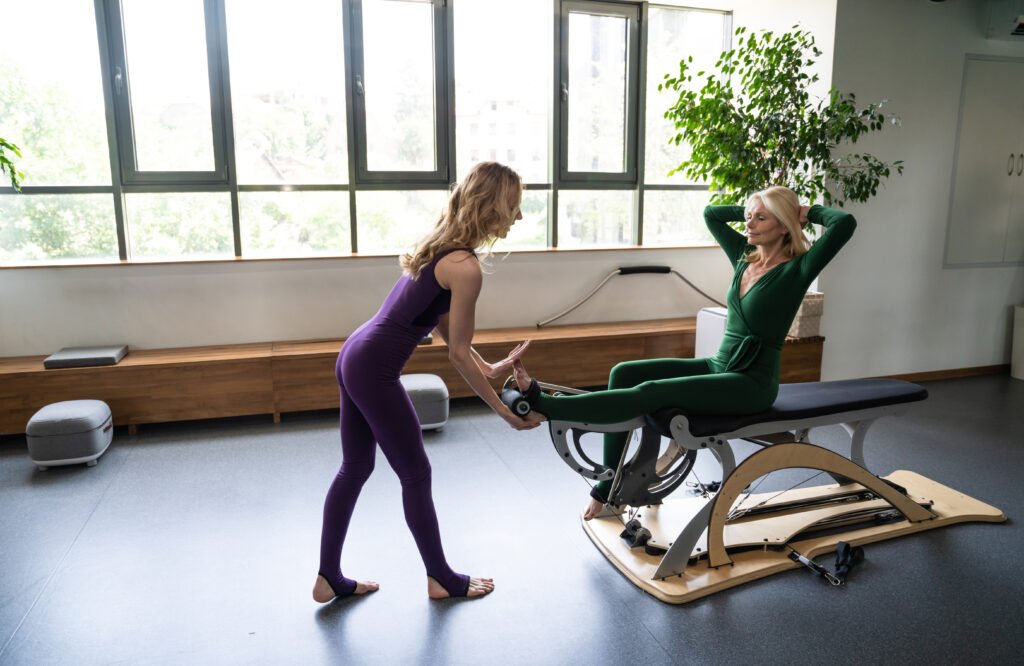
Regular breathwork in Pilates significantly enhances lung capacity, allowing for improved oxygen intake and endurance. This practice boosts ribcage mobility, supporting better posture and reducing tension across the thoracic region. Diaphragmatic breathing strengthens respiratory muscles, contributing to overall core stability. Enhanced techniques facilitate smoother and more controlled Pilates movements, making it easier to execute demanding exercises. Improved breathwork also fosters a deeper mind-body connection, a vital element for mastering Pilates exercises.
– Improves lung capacity for better endurance.
– Enhances ribcage mobility, supporting posture.
– Strengthens respiratory muscles for stability.
– Facilitates smoother Pilates movements.
6. Conscious Breathing Improves Mental Health by Reducing Stress and Anxiety
Conscious breathing techniques in Pilates are particularly beneficial for mental health, helping to lower stress and anxiety levels, and promoting a sense of calm and tranquility. Taking deep, deliberate breaths activates the parasympathetic nervous system, inducing relaxation. Practicing mindful breathing enhances focus and clarity, which is beneficial not only for Pilates but also for daily life challenges. By reducing stress levels, conscious breathing improves mood stability and emotional well-being. Incorporating breathwork into Pilates not only strengthens the body but also offers a holistic approach to overall mental resilience and health.
– Lowers stress and anxiety levels.
– Induces relaxation through parasympathetic activation.
– Enhances mental focus and clarity.
– Improves mood stability and emotional balance.
Embrace the Breathe for Transformative Pilates
Breathing is not just a secondary process in Pilates, but a powerful tool that enhances both physical capabilities and mental focus. When mastered, it transforms the Pilates experience into a holistic workout that unifies the mind and body. As practitioners become more aware of their breathing patterns and integrate them into movements, the positive effects are manifold—from improved performance and endurance to stress reduction and mental clarity. By embracing the full potential of breathing, anyone can elevate their Pilates practice, achieving a transformative state of well-being. As you harness the power of breath, you’ll find yourself advancing further and deeper into this profound practice.

